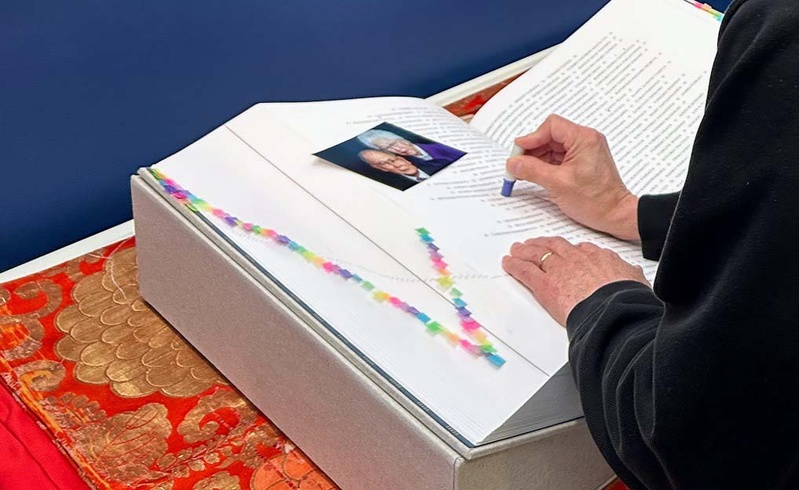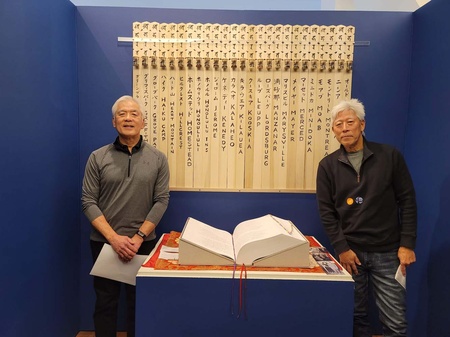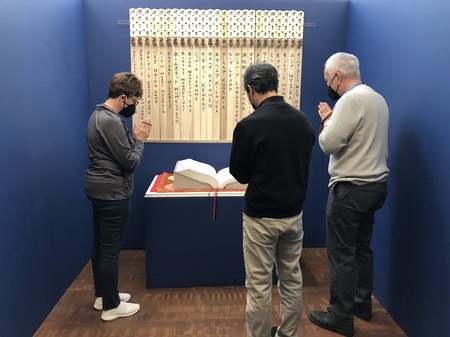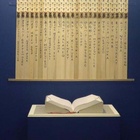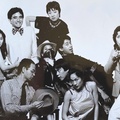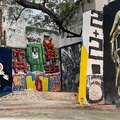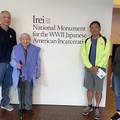For as long as we live, they too will live, for they are now a part of us as
We remember them.
—Sylvan Kamens & Rabbi Jack Riemer
These words of two Jewish rabbis were recalled by two Japanese American brothers who decided to fly all the way from Minneapolis to Los Angeles for the sole purpose of marking their ancestors’ names in Ireichō, the sacred book that lists all those held in detention during WWII. The experience stirred up an avalanche of memories for their entire extended family as they embarked on an emotional family journey of remembrance and discovery.
It started when brothers Paul, Jr. and Fred Tsuchiya decided to travel from their homes in Minneapolis to the Japanese American National Museum. On January 19, 2023, they marked their ancestors’ names in Ireichō at the urging of Fred’s Yonsei son, Grant, a UCLA student who had encouraged his father by offering to share his miles for a free airline ticket.
When they returned from their long journey to put hanko stamps next to the names of 11 family members, they would be followed a week later on January 26, by their Minnesota cousins, Brian and his wife Cheral, and Reverend Dr. Todd Tsuchiya, whose fathers had also resettled in Minneapolis from the camp in Jerome, Arkansas, some 80 years ago.
Not wanting to step on any family toes by putting a stamp on other members of their extended family without their permission, Fred had taken some time to do homework even before boarding his flight. He contacted the children and grandchildren of their father Paul Sr.’s three siblings, Frank, Albert, and William, as well his mother Violet’s three siblings, Arthur, Kenneth, and Iris. Correspondence back and forth revealed an astonishing secret about Fred’s mother’s family. Through his Uncle Arthur’s grandson and cousin Elliot’s son Gregory, Fred was led by Ireichō to a remarkable discovery.
As the third of four children born to Otoichi and Haruko Noma, Fred’s mother Violet, in fact, had another sister no one in the family knew about. Apparently, while Gregory was digging through archival records, he discovered a list that referred to “Hiroko Noma” born to Otoichi and Haruko while at the Jerome concentration camp. Fred was shocked to learn that his mother had a sister named Hiroko born in Jerome on December 23, 1942, and died on December 25, 1942. Thanks to that discovery, he was able to reverently place a hanko stamp next to the name of the aunt he never knew, one of the more than 125,000 people listed in Ireichō.
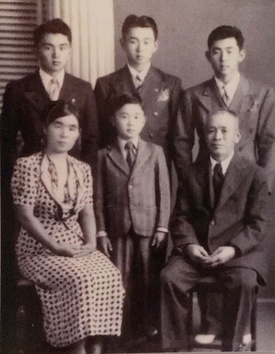
Meanwhile, when Fred and Paul, Jr. talked about their plan to go to LA during a family gathering in 2022, they found out that cousins Brian and his wife Cheral as well as cousin Reverend Dr. Todd Tsuchiya were also interested in traveling to Los Angeles to pay tribute to their respective fathers, Albert and Frank Tsuchiya. Rev. Dr. Todd, who often drove by Camp McCoy in Wisconsin on frequent trips between Minneapolis and Chicago, had already taken an active role in the Ireichō project by collecting soil at this former detention site, one of 75 commemorated in the frontispiece to the book.
Rev. Dr. Todd, now a full-time priest at the Midwest Buddhist Temple in Chicago, had missed two previous opportunities to travel to Los Angeles and was overwhelmed when finally seeing the sacred book up close, noting that he was surprised to see “how big it was.” He was also moved to learn that even if you didn’t have a family member in the book, you could mark others’ names so that no one was forgotten. While there, he performed a reverent gassho as a way of offering a tribute not only to his father’s Tsuchiya family and his mother’s Tanigawa family but to all those forcibly detained during the war.
Fortunately, Brian’s father, Albert Tsuchiya, unlike other Nisei parents, had willingly shared some of his family’s wartime experiences. Through his father, Brian learned that their grandfather Kakunosuke had wanted to repatriate to Japan after being sent to the Tule Lake Segregation Center, but his grandmother Fude encouraged him to stay in America with his family.
Todd learned that his own father Frank had offered to accompany his father to Japan, a dutiful act he says was consistent with his father’s lasting commitment to helping family. The wartime decisions forced upon their large family weighed heavily on them, but fortunately the Tsuchiyas managed to stay together in America. When most of the siblings ended up in Minneapolis after the war, generations of the Tsuchiya clan were born.
In addition to their father’s side of the family, Brian and his wife Cheral wanted to honor those in his mother Sakiye Ohno Tsuchiya’s large family of 10 siblings incarcerated at the Minidoka concentration camp with their parents, Yosaji and Saki Ohno. When he returned from Los Angeles, Brian got to share his Ireichō experience with the family’s three remaining siblings that included his Aunt Sally Sudo, and his mother, now 89 and living in Minneapolis. Sally Sudo responded with the heartwarming words, “I feel like we are being validated!” Brian also recounts the poignant moment he shared with his elderly mother, someone who rarely spoke about camp. She could only say in her own meaningful way, “It must’ve been very emotional.”

But perhaps the most touching moment came when Paul, Jr., who didn’t want to be overcome with tears, asked his brother Fred to pause before Ireichō to read the poem, “We Remember Them,” written by the two Jewish rabbis. Read every Mother’s Day at their family’s mausoleum site, Paul and his wife Debie say they use the poem to think about “all of them, what they endured and taught us to give us a good life.”
This devotion to family sparked by Ireichō continues to live in and through the extended Tsuchiya family and beats strongly in America’s heartland.
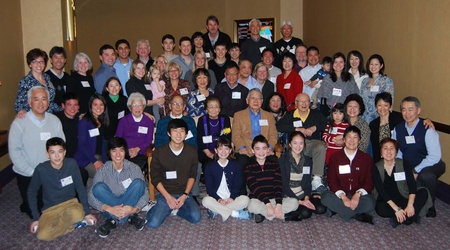
© 2023 Sharon Yamato


